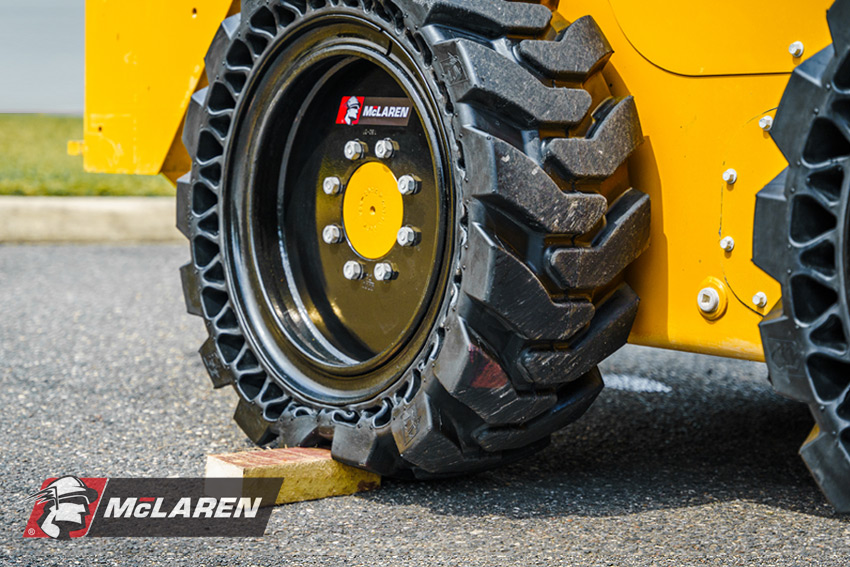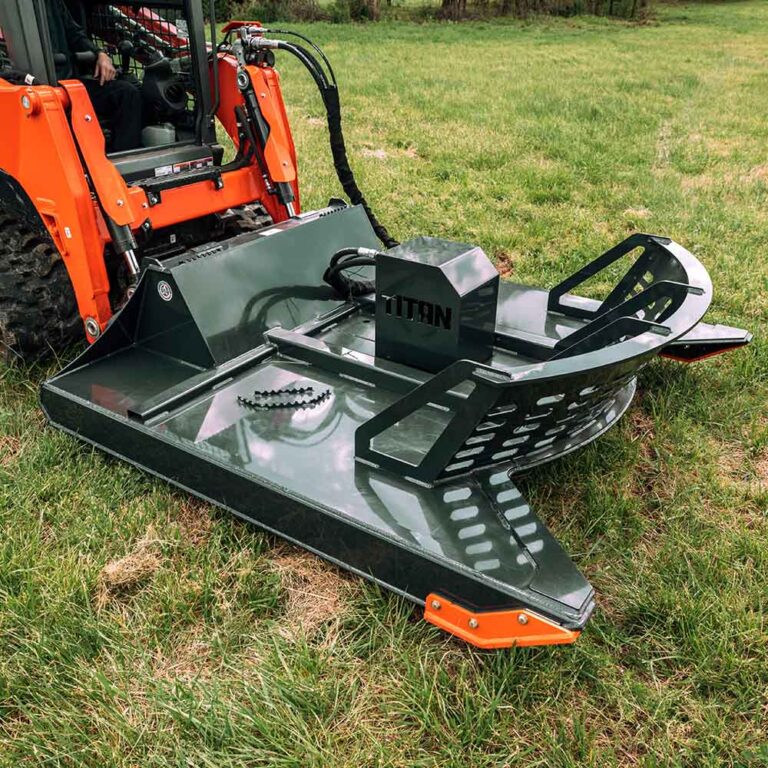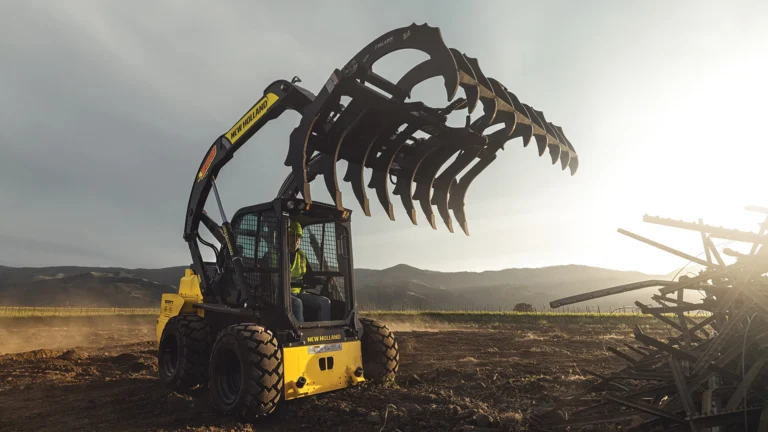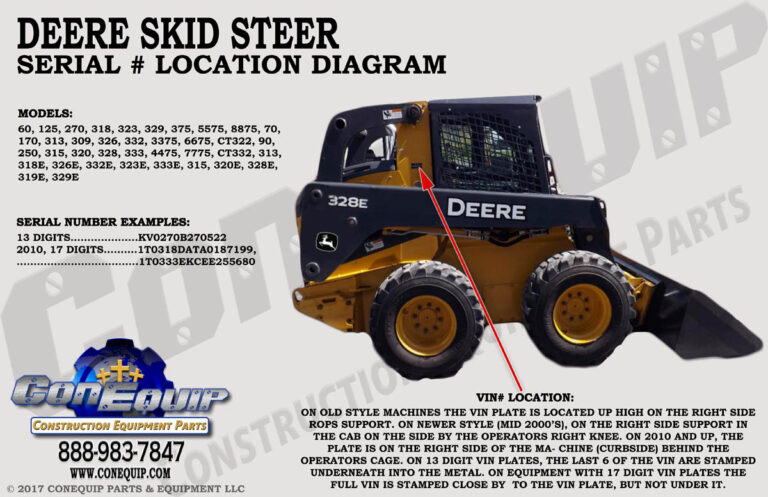Skid Steer Tires: Ultimate Guide for Maximum Durability
Skid steer tires are essential for providing traction and stability on various terrains. Choosing the right tires improves performance and prolongs machine life.
Skid steer loaders are versatile machines used in construction, landscaping, and agriculture. The tires on these machines play a crucial role in their efficiency and effectiveness. With various types available, selecting the right skid steer tires can enhance maneuverability and grip on different surfaces.
Factors like tread pattern, size, and rubber composition significantly impact performance. Whether working on soft soil, gravel, or concrete, the right tires help prevent slippage and improve load-bearing capabilities. Understanding these elements is vital for operators looking to maximize productivity and maintain their equipment. Investing in quality tires ensures safety and optimal performance on any job site.
Introduction To Skid Steer Tires
Skid steer tires play a crucial role in various industries. They provide stability and traction for skid steer loaders. Understanding these tires helps in making informed decisions.
Defining Skid Steer Tires
Skid steer tires are specialized tires designed for skid steer loaders. These tires come in different sizes and types. They are made to handle tough terrains.
Key features include:
- Durable rubber compounds
- Deep tread patterns
- Varied widths and diameters
Choosing the right skid steer tire affects machine performance. It influences how well the machine operates on different surfaces.
Importance In Construction And Agriculture
Skid steer tires are vital in construction and agriculture. They enhance productivity and efficiency. Here’s how they help:
| Industry | Benefits |
|---|---|
| Construction |
|
| Agriculture |
|
Choosing the right tire enhances safety and reduces downtime. Proper tires lead to longer machine life.
Types Of Skid Steer Tires
Choosing the right type of skid steer tire is crucial. Each type offers unique benefits. Understanding these types helps in making the best choice for your needs.
Pneumatic Tires
Pneumatic tires are air-filled tires. They provide excellent traction on various surfaces. These tires are great for off-road conditions. They absorb shocks well, ensuring a smooth ride.
- Good for uneven terrain
- Better flotation on soft ground
- Higher speed capabilities
Solid Tires
Solid tires are made from rubber, without air. They resist punctures and tears. This makes them ideal for harsh environments. They last longer than pneumatic tires.
- No risk of flats
- Excellent for construction sites
- Stable on hard surfaces
Foam-filled Tires
Foam-filled tires offer a middle ground. They are pneumatic tires filled with foam. This prevents flats while maintaining some cushioning. They work well on various terrains.
- Less maintenance required
- Good shock absorption
- Suitable for mixed applications
| Type of Tire | Advantages | Disadvantages |
|---|---|---|
| Pneumatic Tires | Great traction, shock absorption | Prone to punctures |
| Solid Tires | No flats, long-lasting | Stiffer ride |
| Foam-Filled Tires | No flats, good comfort | Heavier than pneumatic |
Factors Influencing Tire Durability
Understanding the factors that affect tire durability is vital. Tires endure heavy loads and harsh conditions. Their lifespan can vary based on several key elements.
Tread Patterns And Depth
The tread pattern directly impacts traction and durability. Different patterns suit various terrains. Here are a few common tread types:
- Directional Tread: Ideal for mud and snow.
- Symmetrical Tread: Offers balanced wear and stability.
- Asymmetrical Tread: Provides versatility in various conditions.
Tread depth is crucial as well. Deeper treads enhance grip. Shallow treads wear out faster and reduce traction.
Tire Composition
The composition of the tire influences its strength. High-quality materials ensure better performance. Key components include:
| Material | Benefit |
|---|---|
| Natural Rubber | Improves flexibility and grip. |
| Synthetic Rubber | Enhances durability and resistance to wear. |
| Steel Belts | Increases strength and puncture resistance. |
Choosing tires made from high-quality materials is essential. They last longer and handle tougher jobs.
Impact Of Terrain
The terrain where the skid steer operates affects tire wear. Different surfaces create different challenges. Consider these factors:
- Soft Ground: Tires may sink, causing increased wear.
- Rocky Surfaces: Sharp edges can puncture tires easily.
- Paved Areas: Hard surfaces reduce tread life over time.
Understanding the terrain helps in selecting the right tires. Proper selection enhances durability and performance.
Proper Tire Selection
Choosing the right skid steer tires is crucial for performance. Proper tire selection affects traction, stability, and overall efficiency. The right tires enhance safety and productivity on the job site.
Assessing Work Environment
Understanding your work environment helps in tire selection. Different surfaces require different tire types. Here are common environments:
- Soft Ground: Use wider tires for better flotation.
- Hard Surfaces: Opt for tires with a harder compound.
- Rough Terrain: Choose tires with deep treads for grip.
Consider the following factors:
- Soil type
- Weather conditions
- Surface stability
Load Capacity Considerations
Load capacity is vital for safety and efficiency. Each tire has a maximum load rating. Exceeding this can lead to tire failure.
Here’s a quick reference for load capacities:
| Tire Size | Load Capacity (lbs) |
|---|---|
| 10-16.5 | 2,200 |
| 12-16.5 | 2,600 |
| 14-17.5 | 3,000 |
Always check your skid steer’s specifications. Ensure tires match the machine’s load requirements.
Compatibility With Skid Steer Models
Not all tires fit every skid steer model. Compatibility affects performance and safety. Follow these steps:
- Check manufacturer guidelines.
- Match tire size with your skid steer’s specs.
- Ensure tread design suits your tasks.
Consult with tire professionals for recommendations. They can help find the best tire fit for your machine.
Maintenance Tips For Longevity
Keeping your skid steer tires in top shape ensures better performance and extends their life. Regular care saves you money and time. Follow these maintenance tips for optimal tire longevity.
Regular Inspections
Inspect your skid steer tires regularly. Look for:
- Cracks or cuts in the rubber
- Uneven wear patterns
- Foreign objects stuck in the tread
Check for proper tread depth. Use a tread depth gauge or a simple penny test:
- Insert a penny into the tread.
- If you see Lincoln’s head, replace the tire.
Proper Inflation Techniques
Correct tire inflation is crucial. Follow these steps:
- Check tire pressure weekly.
- Use a reliable pressure gauge.
- Inflate tires to the manufacturer’s recommended PSI.
Under-inflated tires can cause:
- Poor traction
- Increased wear
- Higher fuel consumption
Over-inflation leads to a rough ride and uneven wear. Adjust as needed.
Rotation Strategies
Rotate your skid steer tires regularly. This helps even out wear. Follow this rotation schedule:
| Position | Rotation Frequency |
|---|---|
| Front to Back | Every 500 hours |
| Cross Rotation | Every 1000 hours |
Use a tire rotation chart to keep track. Proper rotation improves tire life. Less wear means better performance.

Credit: www.producer.com
Repair Or Replace?
Deciding whether to repair or replace skid steer tires can be tough. Understanding tire wear and damage helps make this choice easier. Let’s explore how to identify issues and determine the best action.
Identifying Tire Wear And Damage
Regularly inspecting your skid steer tires is important. Look for these common signs of wear and damage:
- Cracks on the sidewalls
- Bald spots or uneven tread
- Bulges or blisters
- Punctures from sharp objects
- Excessive vibration during operation
Check the tire pressure often. Low pressure can cause extra wear.
When To Repair
Repairing tires can save money. Consider repair if:
- Damage is minor, like small punctures.
- Tread depth is still adequate (at least 1/8 inch).
- Sidewall damage is minimal and does not affect safety.
Repairs can include:
- Patching small holes
- Reinforcing weak areas
- Using sealants for leaks
When To Replace
Sometimes, replacement is necessary. Replace tires if:
- They show severe wear or damage.
- Tread depth is below 1/8 inch.
- Multiple punctures exist in the same tire.
- Sidewall has deep cracks or bulges.
Replacing tires ensures safety and improves performance. New tires provide better traction and stability.
| Condition | Action |
|---|---|
| Minor Puncture | Repair |
| Severe Tread Wear | Replace |
| Multiple Damage Points | Replace |
| Small Sidewall Cracks | Repair |
Cost Vs. Performance
Choosing the right tires for your skid steer involves comparing cost and performance. The balance between these two factors can impact your productivity. Understanding this balance helps you make informed decisions.
Analyzing Cost-effectiveness
Cost-effectiveness is vital for any purchase. For skid steer tires, consider these factors:
- Initial Price: Look for tires within your budget.
- Durability: Longer-lasting tires save money over time.
- Maintenance: Some tires require more upkeep, increasing costs.
- Performance: High-performance tires can boost efficiency.
Evaluate the total cost of ownership. This includes purchase price, maintenance, and expected lifespan. A higher initial cost may lead to savings later.
Balancing Budget And Quality
Finding the right balance between budget and quality is essential. Consider the following points:
- Research Brands: Look for trusted brands that offer good warranties.
- Read Reviews: Customer feedback can provide insight into performance.
- Compare Options: Analyze various tires to find the best fit.
- Seek Expert Advice: Consult with professionals for recommendations.
Use a table to summarize the cost vs. performance of different tire types:
| Tire Type | Cost | Durability | Performance |
|---|---|---|---|
| Standard Tires | Low | Moderate | Good |
| Premium Tires | High | High | Excellent |
| All-Terrain Tires | Moderate | High | Very Good |
Balancing budget and quality ensures you select the right tires. Make informed choices to enhance your skid steer’s efficiency.
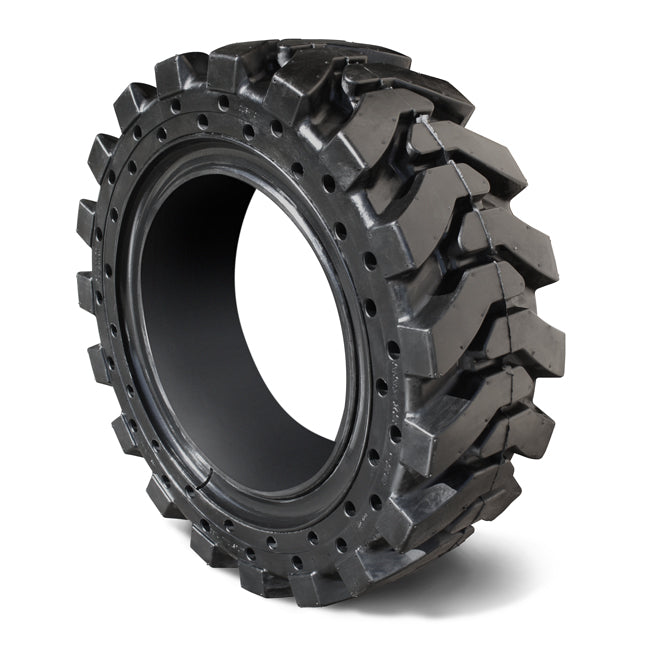
Credit: industrialrubbertires.com
Advancements In Tire Technology
Tire technology has evolved significantly in recent years. New materials and designs improve performance and durability. Skid steer tires are crucial for efficient operation. Understanding these advancements can help users make better choices.
Innovations For Durability
Durability is key for skid steer tires. Several innovations focus on enhancing tire lifespan:
- Enhanced Rubber Compounds: These compounds resist wear and tear.
- Reinforced Sidewalls: Stronger sidewalls prevent punctures.
- Tread Patterns: Unique designs improve traction and stability.
- Advanced Manufacturing Techniques: New methods ensure uniformity and strength.
These innovations lead to lower replacement costs and less downtime. Users enjoy better performance in challenging conditions.
Future Trends
Looking ahead, several trends are shaping tire technology:
- Smart Tires: Sensors monitor pressure and wear in real-time.
- Eco-Friendly Materials: Biodegradable options reduce environmental impact.
- 3D Printing: Custom tires can be produced on-demand.
- Improved Traction Systems: Enhanced designs will tackle various terrains.
These trends promise to make skid steer tires even more efficient. Users can expect better performance and longer-lasting products.
Environmental Considerations
Skid steer tires play a significant role in environmental impact. Choosing the right tires can reduce damage to the earth. Eco-friendly options help preserve nature while maintaining performance.
Eco-friendly Tire Options
Many manufacturers offer eco-friendly tire options. These tires are designed to minimize environmental harm. Here are some features to consider:
- Natural Rubber: Sourced sustainably, reducing deforestation.
- Low Rolling Resistance: Increases fuel efficiency and lowers emissions.
- Recycled Materials: Uses recycled components to create new tires.
Check the specifications when purchasing. Look for certifications like Green Seal or EcoLabel.
Disposal And Recycling
Proper disposal of tires is crucial. Millions of tires end up in landfills each year. Here are some eco-friendly disposal options:
- Recycling Centers: Locate local centers that accept tires.
- Retreading: Old tires can be retreaded for reuse.
- Upcycling: Use old tires for landscaping or playgrounds.
Follow local regulations for tire disposal. Responsible actions can significantly reduce environmental impact.
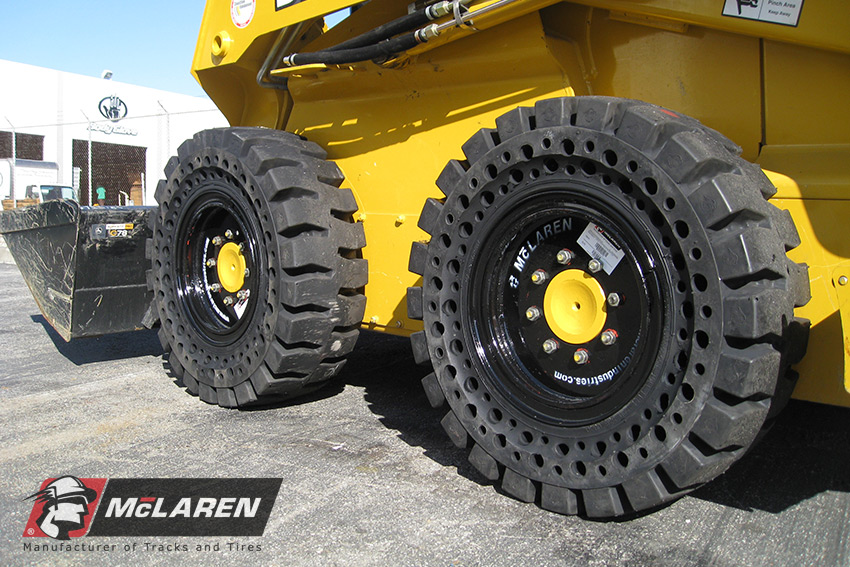
Credit: www.mclarenindustries.com
Case Studies
Case studies provide valuable insights into real-world applications of skid steer tires. They showcase durability, performance, and efficiency in various scenarios. Let’s explore some examples that highlight these aspects.
Real-world Durability Scenarios
Different environments test the strength of skid steer tires. Here are some scenarios:
- Construction Sites: Heavy loads and rough terrain.
- Agricultural Fields: Muddy conditions and constant movement.
- Landscaping Projects: Tight spaces and varied surfaces.
In these cases, tire performance directly impacts work efficiency. A study showed:
| Scenario | Average Lifespan (Hours) | Failure Rate (%) |
|---|---|---|
| Construction Sites | 800 | 15 |
| Agricultural Fields | 1000 | 10 |
| Landscaping Projects | 600 | 20 |
These numbers highlight the importance of choosing the right tire for each job.
Lessons Learned
Each scenario offers lessons on tire selection and maintenance. Key takeaways include:
- Choosing the Right Tread: Tread pattern affects grip and durability.
- Regular Inspections: Check for wear and tear frequently.
- Proper Inflation: Maintain correct air pressure for optimal performance.
Understanding these lessons can save time and money. Investing in quality tires pays off in the long run.
Frequently Asked Questions
What Are The Types Of Skid Steer Tires?
Skid steer tires come in three main types: standard, foam-filled, and solid. Standard tires are air-filled, offering good traction on various surfaces. Foam-filled tires prevent punctures and provide excellent stability. Solid tires are puncture-proof and ideal for rough terrains, but they may sacrifice some ride comfort.
How Do I Choose Skid Steer Tires?
Choosing skid steer tires depends on your work environment. Consider factors like terrain type, load capacity, and tire durability. For soft or muddy ground, opt for larger, more aggressive tread patterns. For hard surfaces, select tires with a smoother tread.
Always match tires to your specific machine requirements.
How Often Should I Replace Skid Steer Tires?
You should replace skid steer tires every 500 to 2,000 hours. The exact timing depends on usage and tire type. Inspect for signs of wear, such as cracks or low tread depth. Regular maintenance can extend tire life. Always monitor tire performance to ensure safety and efficiency.
Can I Mix Different Skid Steer Tire Types?
Mixing different skid steer tire types is not recommended. Different tire types can affect machine handling and stability. It may lead to uneven wear and compromised traction. For optimal performance, always use the same tire type on all wheels. This ensures consistent handling and better safety.
Conclusion
Choosing the right skid steer tires is essential for optimal performance. The right tires enhance traction and stability on various terrains. Investing in quality tires can significantly improve your machine’s efficiency and longevity. Keep your equipment running smoothly by selecting tires that match your specific needs and working conditions.

